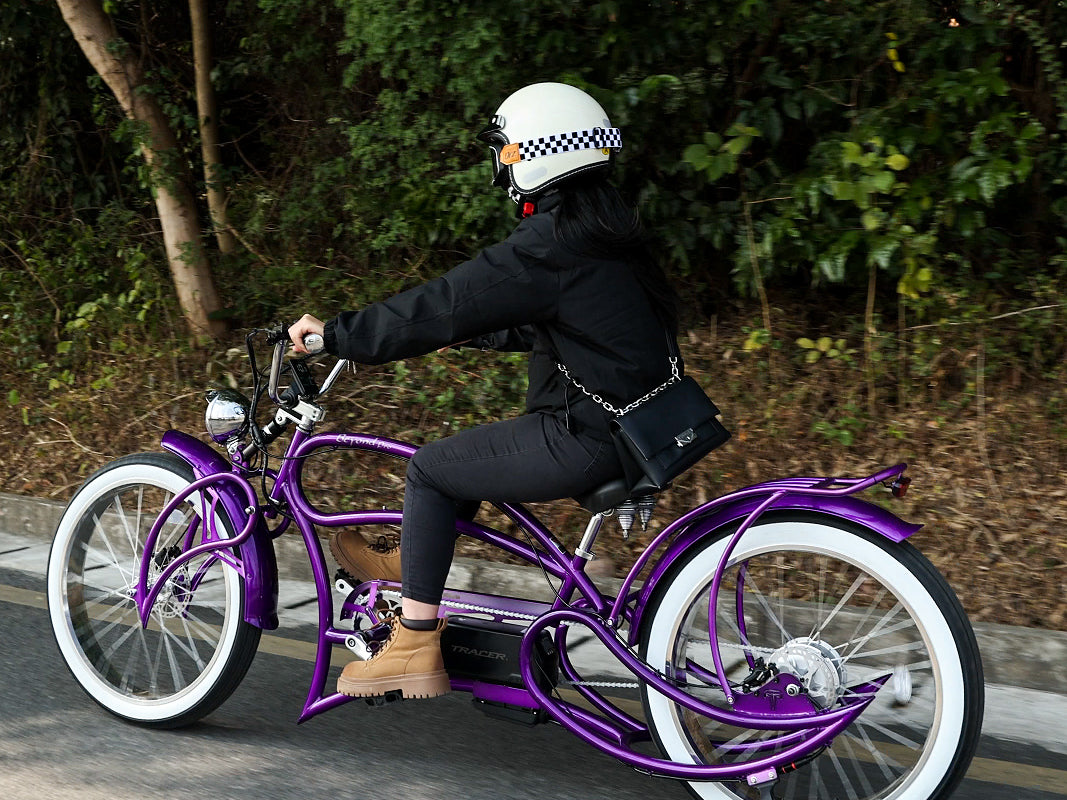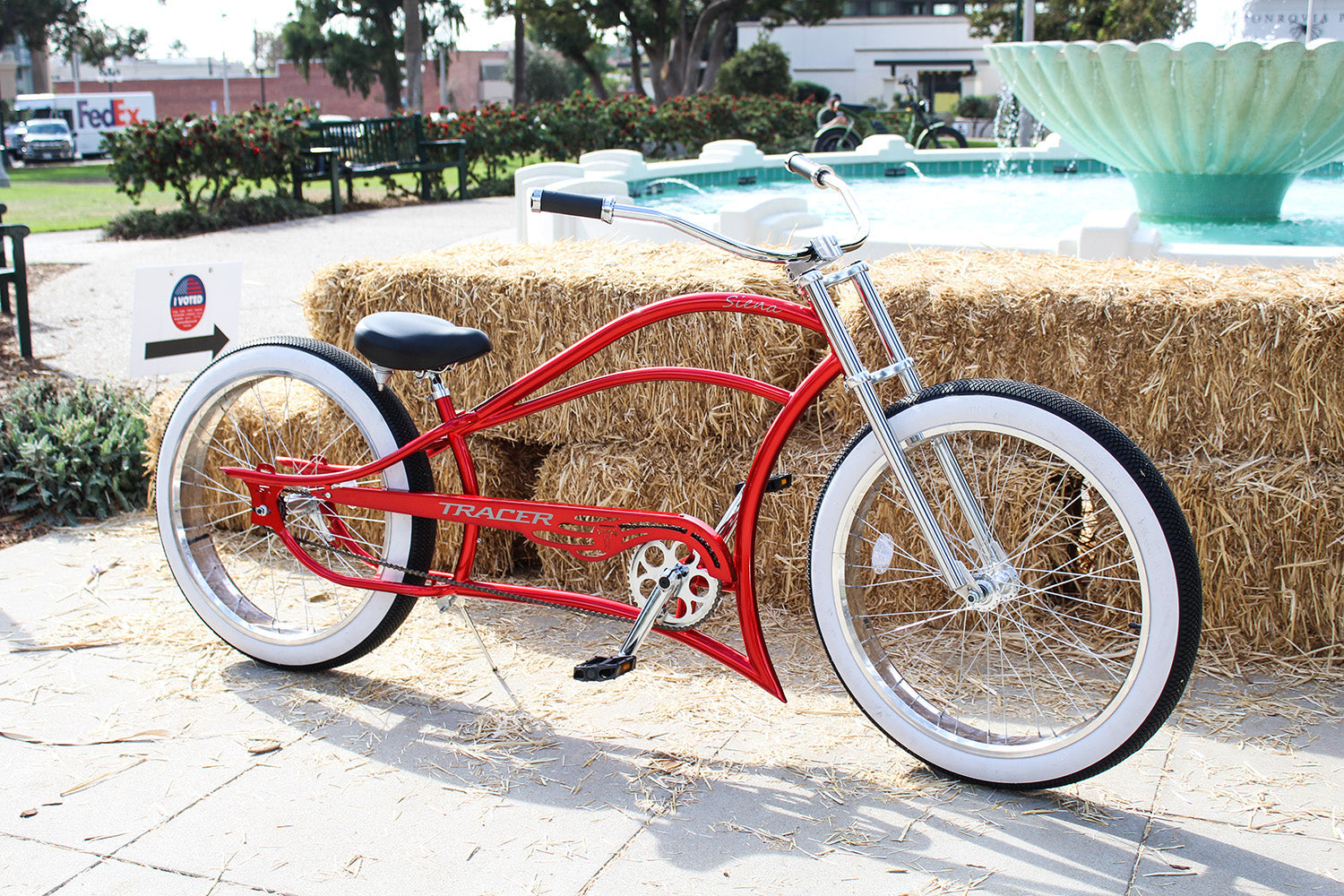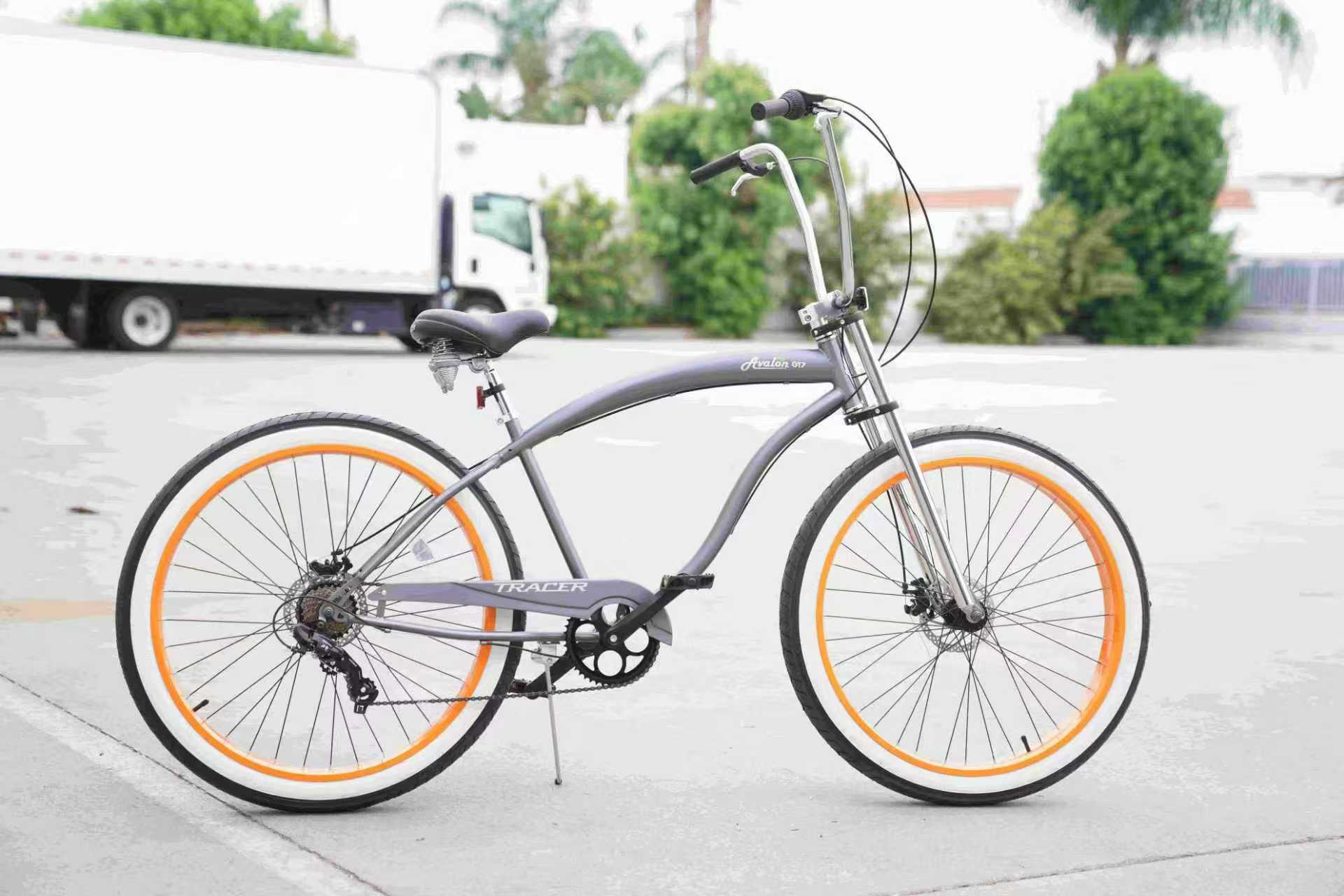You might be wondering: can those stylish cruiser ebikes handle uphill climbs? Let’s dive into this question and explore what makes cruiser ebikes capable of conquering hills while maintaining that comfortable, enjoyable ride we all love.
Can Cruiser Ebikes Go Uphill?
Good news! Cruiser ebikes are capable of going uphill, thanks to their electric motors. However, not all cruiser ebikes are created equal when it comes to hill-climbing performance. Let’s explore what makes them conquer hills with ease.
What Makes a Cruiser Ebike Good at Climbing Hills?
Several factors contribute to a cruiser Ebike's excellent hill-climbing ability, including motor power, torque, battery capacity, tire characteristics, gear system, and frame design. The details are as follows:
- Powerful Motor: A higher-power motor outputs more power, making it easier to climb hills. Torque, the rotational force that propels the wheels forward, is the true indicator of hill-climbing ability. For gradients exceeding 10%, an ebike needs at least 60 N·m of torque for comfortable climbing, and for slopes of 20% or steeper, a torque of 80 N·m or more is essential. Hub motors are often preferred because they can provide more torque. For more details about gear, read the Demystifying E-Bike Hub Motors: Powering Up Your Ride
- Large-capacity Battery: The battery is the power source of the e-bike. A large-capacity battery can provide continuous power support, ensuring that the e-bike does not run out of power during the climbing process, thereby affecting its climbing performance. For example, the Tracer Raptor Pro DTS is equipped with a 48V 20Ah battery, which allows it to travel more than 65 miles in pedal-assist mode, providing a strong guarantee for climbing hills.
- Fat Tires: Fat tires have a larger contact area with the ground, which can improve grip and stability, especially on uneven or soft terrains. They can provide extra traction, enabling riders to maintain momentum during uphill climbs and more easily overcome complex terrains. For more details about gear, read the Why Choose a Fat-Tire Bike? 5 Must-Know Reasons
- Optimized Gear Ratio: By optimizing the gear ratio of the ebike, riders can maintain an optimal pedaling rhythm, conserve energy, and transmit power precisely where it is needed. Selecting the right gear can balance speed and torque, allowing for smooth transitions between different inclines during the climbing process. For more details about gear, read the Stretch Cruiser Riding Top Tips: A Complete Guide To Cruiser Gear Systems
- Shock Absorpion System: A good shock-absorption system can reduce the impact and vibration when the ebike is climbing hills, making the ride smoother. This enables riders to focus more on climbing techniques and power output, indirectly improving climbing efficiency.
- Reasonable Frame Design: The frame is the supporting structure of the e-bike. A high-quality frame design can not only ensure the stability of the vehicle during the climbing process but also help improve the overall performance of the ebike, providing a better riding experience for riders.
Tips for Better Hill Climbing with Your Cruiser Ebike
Nailing hill climbs on a cruiser ebike requires more than just the bike’s specs—it takes preparation, smart techniques, and basic upkeep. Here’s a streamlined guide:
Pre - Climb Prep
- Inspect the Bike: Ensure the battery is fully charged. Check tire pressure (balance traction and rolling resistance) and confirm gears shift smoothly and brakes work well.
- Plan the Route: Know hill gradients, lengths, and terrain to adjust your strategy (e.g., save battery on flats for steep climbs).
- Dress Right: Wear moisture-wicking clothes and sturdy, grippy shoes.
On - Hill Techniques
- Adjust Assist Modes: Gradually increase assist as the hill steepens—low/medium for gentle slopes, high for steep ones. Avoid sudden changes.
- Shift Gears Early: Drop to a lower gear before the hill gets too steep to keep a steady cadence (60 - 80 RPM). Shift up as you near the top.
- Maintain Posture: Sit upright with a slight forward lean to balance weight. Keep hands relaxed and core engaged; avoid standing to pedal.
- Pace Yourself: Stay steady, breathe controlled, and focus on a point ahead rather than the hilltop.
Post - Climb Steps
- Cool the Motor: Let it rest a few minutes before turning off the bike.
- Check Components: Inspect gears, chain, and brakes for wear; clean and lubricate the chain if needed.
- Recharge the Battery: Do this soon after riding to preserve its health.
Follow these tips to make the most of your cruiser ebike’s climbing ability and enjoy hilly rides more.
Limitations to Consider for Cruiser Ebike Hill Climbing
Riders should note:
- Weight: Cruiser ebikes are heavier than regular bikes, making them slightly more challenging if you run out of battery
- Battery Range: Steep climbs consume more battery power
- Motor Heat: Continuous climbing can cause motors to overheat if not properly designed
- Frame Design (for Stretch Cruiser Electric Bikes): Stretch cruiser electric bikes have a frame setup mainly for relaxed rides at beaches or by the sea, which is not ideal for mountain climbing. With a low-slung frame and low chassis, they're prone to hitting uneven rocks.Though their power output itself isn't an issue, the structural design hampers performance on rugged, hilly terrains.
Knowing these helps with route planning and expectation management.

Choosing the Right Cruiser Ebike for Hill Climbing
When it comes to conquering hilly terrains on a cruiser ebike, the right choice of bike can make all the difference. Here are two top - tier options that stand out for their hill - climbing capabilities.
1. Loiter Beach Cruiser
Design and Versatility
Blends classic style with daily comfort, suitable for commuting, weekend rides, coastal cruising, and hilly terrains.
Power and Efficiency
-
Motor: 800W rear-drive motor, top speed 25 mph, delivers sufficient torque for steep hills.
- Battery: Panasonic 48V/17.5Ah lithium-ion battery, ensures long-lasting power for hilly rides and features fast charging.
Terrain Adaptability
- Tires: 26*4.0-inch fat tires enhance grip and stability on hilly, uneven, grassy, rugged, or muddy terrains.
- Gear Sysyem: Shimano TY300 7-speed derailleur enables precise shifting, balancing speed and torque for easy hill climbing.
Other Features
-
Shock Absorpion: Oversized spring saddle with cushioning and shock absorption reduces discomfort on rough hills.
-
Lighting: 48V high-powered headlight ensures safe night rides on hilly paths.
- Frame Options: Step-through (easy mounting/dismounting) and step-over (traditional look) frames available.

2. Tracer Tacoma
Performance-Oriented Design
Crafted for adventurers who pursue both performance and style, it features an optimized design that adapts to various terrains, especially suitable for hilly areas and off-road trails, delivering a smooth and exciting riding experience.
Power and Endurance
- Motor:Equipped with an 800W rear-drive motor, it delivers instant torque, enabling quick acceleration when starting to climb hills. With a top speed of 22mph, it balances speed and power, efficiently handling hilly sections.
- Battery: A 48V/12.8Ah Panasonic LG lithium battery offers considerable range, is durable, and charges quickly, providing stable power support for hill-climbing adventures.
Terrain Handling
- Tires: 26x4.0-inch puncture-resistant fat tires with a rugged tread pattern. They have strong grip on terrains such as mountains, mud, and snow, evenly distribute the weight, and reduce the possibility of getting stuck in soft ground while climbing.
- Suspension: An alloy suspension fork with lockout and preload adjustment. Locking it on flat roads enhances stability; on complex terrains, the preload can be adjusted to adapt to body weight and the degree of bumps, improving climbing comfort and controllability.
- Gearing: Shimano TY300 7-speed derailleur, which shifts smoothly and reliably. It easily adapts to different slopes, maintaining a comfortable cadence and power transmission.
Safety and Comfort
- Brakes: Front and rear 180mm mechanical disc brakes provide strong and responsive braking force. They can effectively control speed when climbing and ensure safety when descending.
- Erogonomics: The grips have pressure-relief zones to reduce hand fatigue during long climbs; the thumb throttle is positioned ergonomically to reduce wrist pressure and enable precise control; the smart LCD screen displays real-time speed, mileage, and battery level, facilitating the planning of climbing routes.

In summary, both models are excellent choices for hill climbing. The Loiter has a more versatile design and a larger battery capacity; the Tracer Tacoma focuses on performance and off-road capabilities, with outstanding advantages in suspension and tires. You can choose according to the terrain you often ride on, your range needs, and your style preferences.
Conclusion: Enjoy the Climb!
Cruiser ebikes are more than capable of handling uphill climbs, making them versatile options for various terrains. Whether you’re commuting through a hilly city or exploring scenic countryside routes, a well-equipped cruiser ebike will get you up those hills with ease and comfort.
At Tracer, we design our bikes with climbing in mind, so you can enjoy the freedom of two-wheeled transportation regardless of your local terrain. So go ahead—embrace those hills and enjoy the ride!
What’s your experience with cruiser ebikes and hill climbing? Share your stories and tips in the comments below!






Leave a comment
This site is protected by hCaptcha and the hCaptcha Privacy Policy and Terms of Service apply.